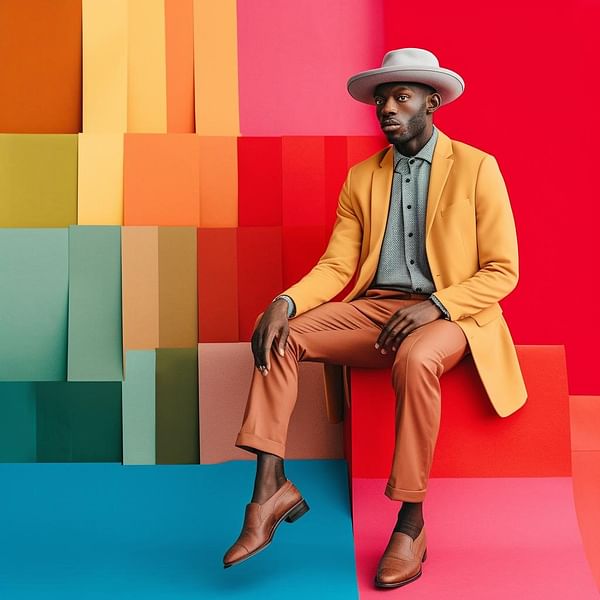

The psychology of modern colors plays a pivotal role in shaping our perceptions, influencing decisions, and driving engagement in the modern world. Color choices aren’t arbitrary; they carry profound psychological weight, impacting everything from brand identity to consumer behavior. Many of us take the seemingly simple act of choosing a color for granted, unaware of the intricate psychological processes at play. This article will unravel the fascinating science behind the psychology of modern colors, exploring the emotional, cultural, and physiological factors that contribute to our color perception, enabling you to harness the power of color to achieve your goals. We’ll also see how color psychology translates into practical applications in branding, marketing, and design. Let’s embark on this enlightening journey into the world of colors!
The Power of Color in Modern Communication
Exploring the Subconscious Influence
Color psychology explores the intricate relationship between colors and human emotions. Colors hold cultural and historical significance, creating associations that impact our subconscious reactions. Understanding this can significantly enhance communication and design strategies across various industries, from marketing to art. Our emotional responses to colors are deeply ingrained, influenced by personal experiences, cultural background, and social conditioning. These responses often operate on a subconscious level, affecting our choices and perceptions without conscious awareness. This understanding is fundamental for successful design and effective communication in the modern landscape.
For instance, consider the stark contrast between the bold, assertive red frequently used in advertisements for energy drinks, and the soothing, calming blue used in tranquil spaces such as spas or calming apps. This deliberate use of colors reflects a conscious understanding of their inherent psychological impacts. Understanding how specific colors impact us provides insights into effective communication and design strategies. This understanding is fundamental for successful design and effective communication in the modern landscape.
The Physiological Basis of Color Perception
How Our Eyes Respond to Color
Our physiological responses to color are fundamental to comprehending the psychology of modern colors. The human eye, a complex sensory organ, processes light in a way that leads to the perception of color. Light waves, reflecting off surfaces, trigger signals that travel along the optic nerve to the brain, initiating a cascade of neural processing. This processing influences our emotional responses to specific colors. The wavelength of light dictates the color we see. Different wavelengths stimulate different photoreceptors in the eye, leading to variations in color perception. The intensity of light also impacts how we perceive colors; a brighter shade of a color often evokes more excitement or intensity compared to a muted version.
Scientific studies have demonstrated that certain colors can influence physiological functions such as heart rate and blood pressure. For example, exposure to warm colors like red and orange can increase heart rate, while cool colors like blue and green tend to have a calming effect. Such physiological responses highlight the significance of thoughtful color selection in various contexts, from designing calming meditation apps to creating vibrant and energizing retail environments.
Cultural and Societal Influences on Color Meaning
Global Variations in Color Associations
The psychology of modern colors is also deeply intertwined with cultural and societal influences. Different cultures assign varying meanings to colors, stemming from historical, religious, and social practices. These associations can significantly impact color perception and preferences across different societies. For instance, white is associated with purity and innocence in Western cultures, while in some Eastern cultures, it might be linked to mourning or death. Similarly, red often symbolizes passion and excitement in Western cultures, whereas in some Eastern traditions, it may represent luck or prosperity.
Marketers and designers must take these cultural nuances into account when utilizing colors in their products or marketing materials, understanding that a color that resonates positively in one culture may have the opposite effect in another. Failure to acknowledge these nuances can lead to misinterpretations and miscommunications, hindering effective communication and potentially causing significant backlash. Understanding these subtle differences is crucial for success in global markets.
The Impact of Color in Branding and Marketing
Crafting Brand Identities Through Color
In the realm of branding and marketing, the psychology of modern colors is crucial for crafting brand identities that resonate with target audiences. Color can instantly evoke associations and establish a particular brand personality. For example, a brand targeting youthful energy might use vibrant colors like yellow and orange, whereas a company promoting luxury might select sophisticated colors like deep blues and blacks. These color choices communicate aspects of the brand’s identity and values without using words. These color choices reflect the values and personality of the brand, communicating significant aspects without using words.
Companies often conduct market research to understand the specific color associations preferred by their target demographics. This targeted approach allows them to select hues that generate positive emotional responses and strengthen brand recognition. For example, the color scheme of a fast-food restaurant is often designed to evoke feelings of appetite and enthusiasm. Understanding color psychology helps brands tailor their messages for maximum impact.
Color Psychology in Design and Everyday Life
Using Color to Enhance User Experience
Color psychology plays a significant role in various aspects of daily life, including design and user experience. The use of color affects our mood, perception, and even productivity. For example, studies have shown that utilizing a calming color palette, such as blues and greens, can improve user experience in applications or websites. These user-centered approaches demonstrate that thoughtfully chosen color palettes are critical for creating inclusive and emotionally resonant experiences.
In graphic design, the appropriate use of color enhances visual communication. Utilizing contrasting colors to highlight specific elements improves readability and clarity. By strategically selecting colors, designers can effectively guide the viewer’s attention and communicate specific messages or ideas. Choosing colors that evoke the appropriate feeling for a given context is important and often overlooked in design. Therefore, understanding the psychology of colors leads to more engaging designs.
The Impact of Light on Color Perception
The Interplay of Light and Color
The interplay of light and color plays a crucial role in how we perceive colors. Different lighting conditions can alter our perception of colors, shifting tones and shades in subtle ways. This subtle variation can impact the emotional response and associations linked to different colors. Understanding these nuances is crucial for effective communication and design, particularly in marketing or branding, where the chosen colors must align with the desired message across various lighting environments.
Ethical Considerations in Color Usage
Addressing Accessibility and Cultural Sensitivity
In addition to the aesthetic and psychological considerations of color, designers must also consider the ethical aspects of their color choices, particularly when crafting accessible designs. Ensuring accessibility for individuals with color vision deficiencies requires careful consideration of color pairings and contrasts. Also, recognizing and respecting cultural color symbolism is crucial for effective cross-cultural communication. Ethical considerations play a significant role in avoiding misinterpretations and ensuring inclusivity in the designs and materials used.
The Future of Color Psychology
Staying Ahead in a Changing World
The world of color psychology is constantly evolving. As societies change, so too will the cultural and emotional associations linked to specific hues. Staying informed about these trends is crucial for maintaining relevance and understanding the subtle shifts in consumer preferences and behaviors.
Color Psychology in Web Design
Designing User-Friendly and Engaging Websites
Color psychology significantly impacts the user experience of websites. By understanding the emotional effects of colors, web designers can create visually appealing and emotionally resonant experiences that optimize user engagement and conversions. Using colors that are accessible to those with color vision deficiencies, as well as considering cultural sensitivities, leads to effective designs that meet the needs of global audiences.
Frequently Asked Questions
What are the most impactful colors in marketing and design?
The most impactful colors often vary based on the specific context and target audience. However, colors like blue often convey trust and reliability, while red often signifies urgency and excitement. Understanding the inherent associations with each color, coupled with audience-specific research, empowers businesses to make informed color choices for maximum impact. Green, associated with nature and growth, often evokes tranquility and harmony, which is why it is frequently seen in eco-friendly or wellness branding.
How can I apply color psychology principles in my daily life?
Applying color psychology principles to your daily life involves recognizing the effects colors have on your emotions and motivations. Understanding how colors evoke emotions can enable you to manipulate your surroundings and create an atmosphere that enhances productivity and well-being. This knowledge helps you create a more positive environment by using the psychological effects of colors, whether in your home or workspace.
In conclusion, understanding the psychology of modern colors is crucial for effective communication and design. By considering the emotional and cultural associations linked to specific hues, businesses and individuals can craft messages that resonate with their target audiences. This article has explored the various aspects influencing color perception, from physiological responses to cultural contexts. To delve deeper into this fascinating field, I encourage you to explore related resources and consider incorporating these psychological insights into your future creative endeavors. Explore the world of color psychology today!